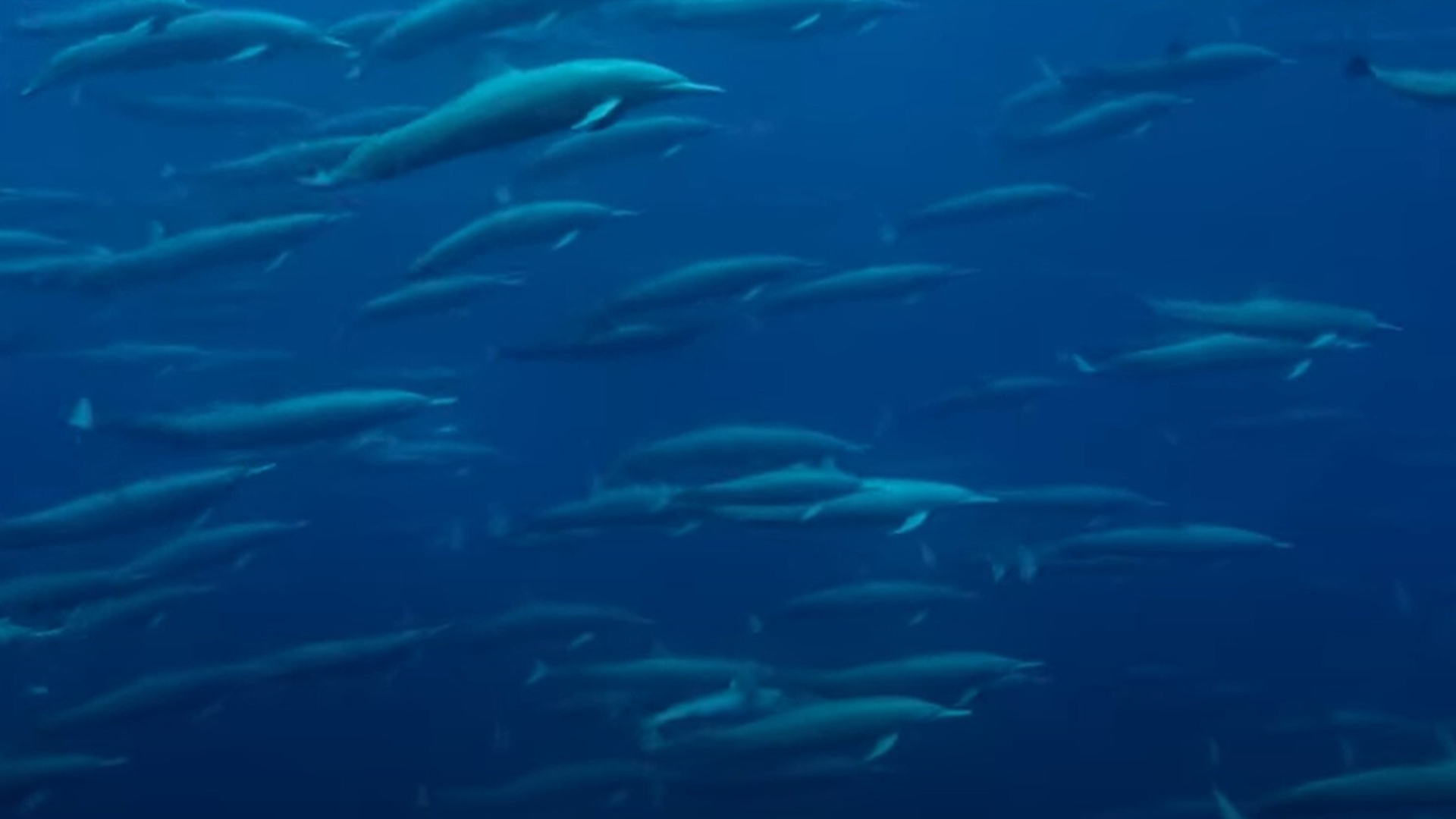Watch a huge megapod of acrobatic spinner dolphins in incredible, rare video
A megapod of dolphins with thousands of individuals has been captured on video hunting flying fish off the coast of Costa Rica.
Rare footage has captured an enormous megapod of dolphins joining together to hunt flying fish in the Pacific Ocean off Costa Rica. The video shows one of the biggest groups of spinner dolphins ever filmed, with thousands banding together in a gathering that extended deep underwater.
The event was captured as part of PBS's "Spy in the Ocean, a Nature Miniseries," in which the team uses spy cameras attached to animatronic animals to infiltrate wild groups. Off Costa Rica, a "spy dolphin" was deployed among a group of spinner dolphins (Stenella longirostris) — a species known for its acrobatic, twisting leaps out of the water.
The megapod sequence was very hard to capture, Matthew Gordon, a wildlife producer on the show, told Live Science via email. "It was extremely difficult to even find the spinner dolphins, so there were many days out at sea where we traveled hundreds of kilometers over the duration of the shoot and couldn’t even find them. But when we did find them, that’s when the magic happened," he said.
Related: Orcas are learning terrifying new behaviors. Are they getting smarter?
Once they had found the pod, the team placed the spy dolphin in the mix and used an animatronic bird drone to observe the dolphins from the sky.
The clip shows the dolphins communicating with one another through clicks and whistles. They appear to gather other dolphins from more distant areas of the ocean by signaling their presence with leaps.
Gordon said the pod eventually covered an area of around 108,000 square feet (10,000 square meters) at the surface. "But that was just the tip of the iceberg, as when you looked underwater, the pod also continued down as far as the eye could see — and that was in reasonably clear water," he said, adding the pod contained a few thousand dolphins at its peak.
Get the world’s most fascinating discoveries delivered straight to your inbox.
"Spy in the Ocean" uses lookalike robots in the hopes of capturing realistic behavior; otherwise, the animals might be distracted by large, obtrusive cameras. "With Spy Dolphin being in the heart of the action, it gave us a unique perspective in what it would be like to be another dolphin among the real tuna and dolphins," Gordon said.

Hannah Osborne is the planet Earth and animals editor at Live Science. Prior to Live Science, she worked for several years at Newsweek as the science editor. Before this she was science editor at International Business Times U.K. Hannah holds a master's in journalism from Goldsmith's, University of London.




